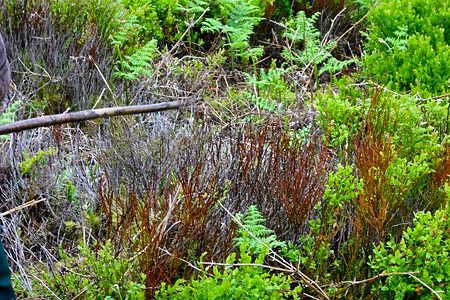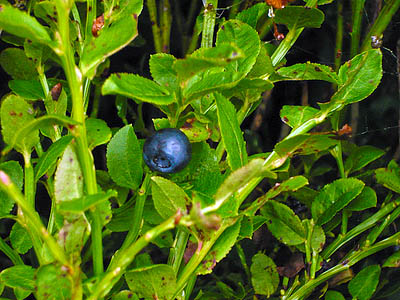Walkers and climbers are being asked to take care not to spread a devastating disease affecting plants in one of the Peak District’s most popular climbing areas.
Bilberry plants on The Roaches estate in the South-East of the national park have been hit by a rare fungal infection.
National park managers stressed the area was still open to the public, but pleaded with outdoor enthusiasts to help stop the Phytophthora pseudosyringae disease, which kills the plants, from spreading from its site at Roach End.
The infection is harmless to humans and animals, but has a big impact on plant life.
Bosses from the Peak District National Park Authority are asking all users of The Roaches to avoid contact with bilberry, stay on the main footpaths when walking or accessing the climbing crags and boulders, and to keep dogs on short leads.
Experts from the authority and Natural England are working together to deal with the disease, with the advice of scientists from the Food and Environment Research Agency.
Managers are preparing to treat the infected site and carry out surveys to see if the problem exists in any other areas. The Roaches is a Site of Special Scientific Interest and Special Area of Conservation for the quality of its habitats.
Richard Campen, director of operations for the Peak District National Park Authority, said: “This particular fungus has only been confirmed in Britain on bilberry very recently.
“It is not harmful to people, wild animals or livestock, even when eaten, but it can kill large areas of bilberry. The bilberry on The Roaches is a key part of the upland heathland, blanket bog and woodland communities so the loss of any bilberry plants will have a big impact on the ecology of the site.
“We are following expert advice on the best way of handling the disease and it is likely that this work will take several months to complete.”
The fungus spreads mainly spreads through the roots of infected plants into healthy ones but can also be passed on through clothes, soil on boots, and animal fur.
The outbreak on The Roaches is believed to be only the third recorded case of the disease infecting bilberry plants in the world. The first was at Cannock Chase in Staffordshire, and the second in the South-West of England, both in 2009.
Kate Maltby, conservation adviser for Natural England, said: “Phytophthora is a devastating disease for our native plants and we’re working with partners in the Peak District national park to help control its spread at The Roaches.
“We ask anyone visiting this beautiful spot to follow local signs and guidance to prevent this disease from reaching a wider area.”
The tenant farmer, neighbouring landowners, local councillors and other groups have already been notified about the work to tackle the bilberry disease.


Andrew Taylor
29 May 2011Tried to email Natural England about a few sad looking wimberries in Saddleworth - email rejected!!
Any advice about whom to contact?
Andrew Taylor
29 May 2011Seconds after the previous comment I have received a reply - albeit an "out of office" reply - from Natural England...
It IS a Bank Holiday weekend, after all!
So - despite the e-mail rejection advice I received, the email got through!